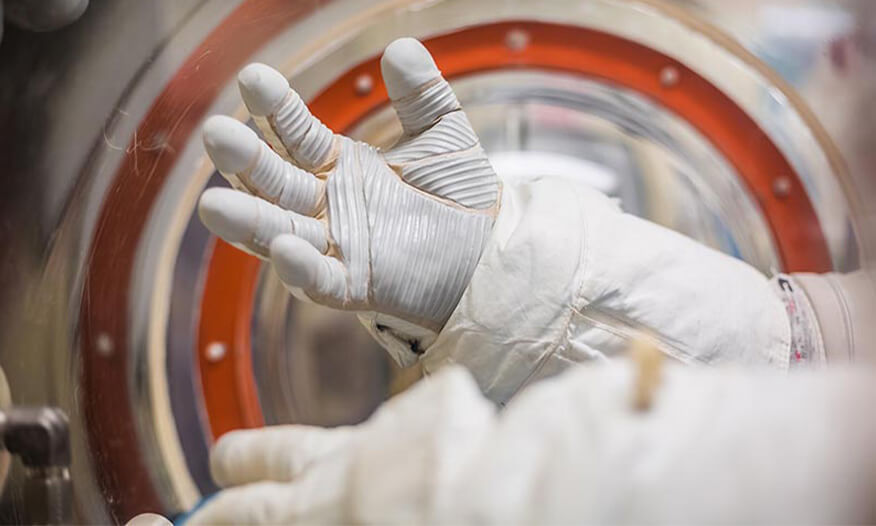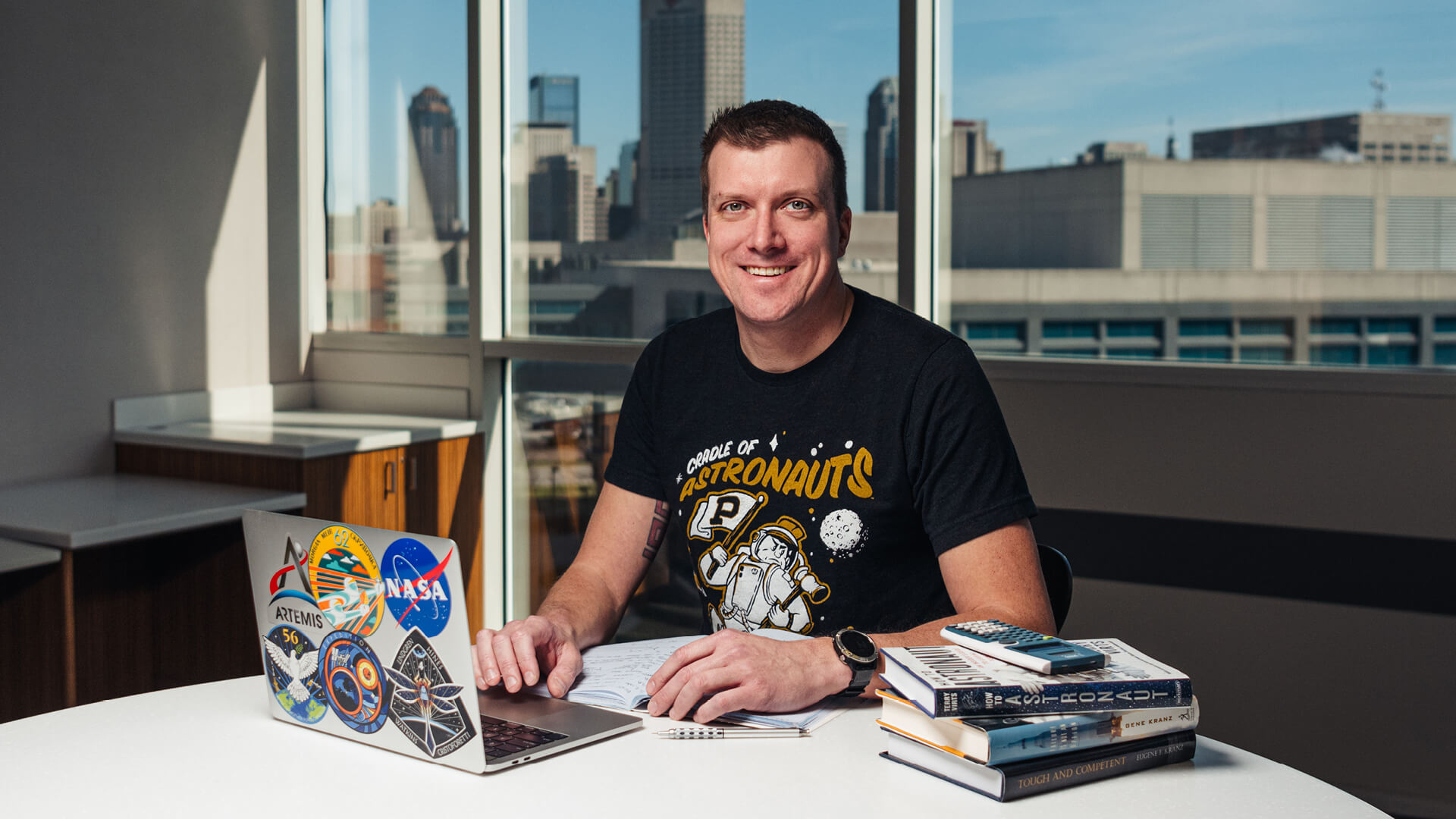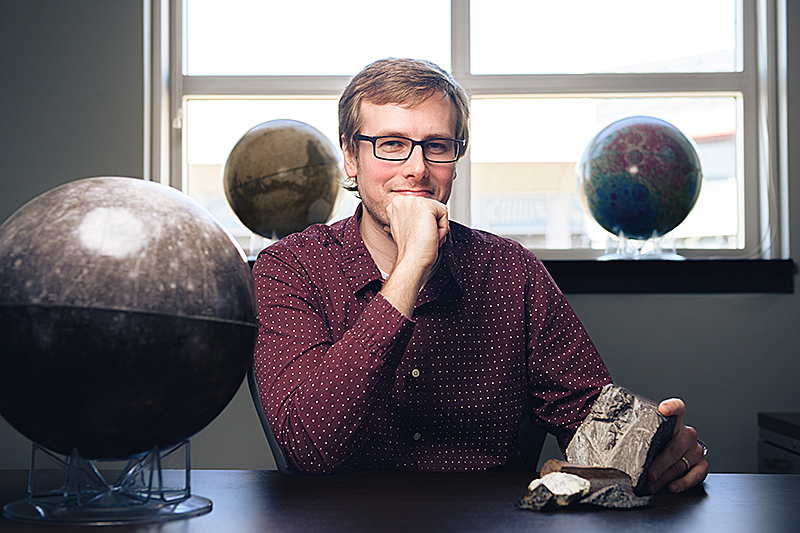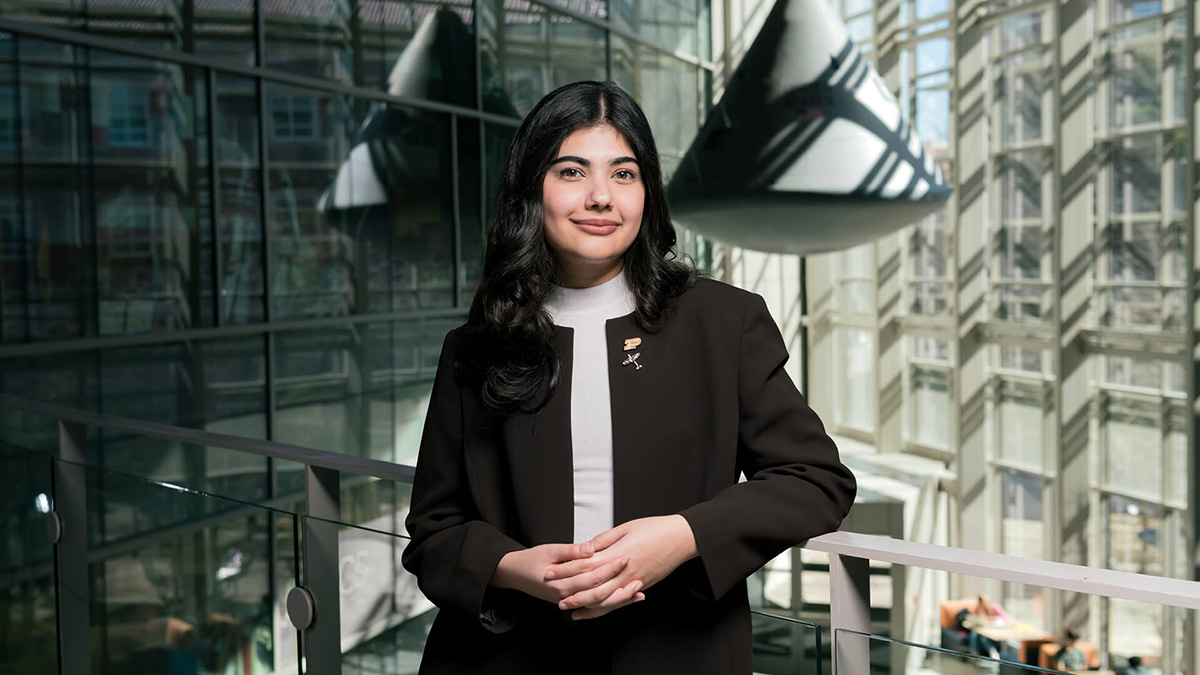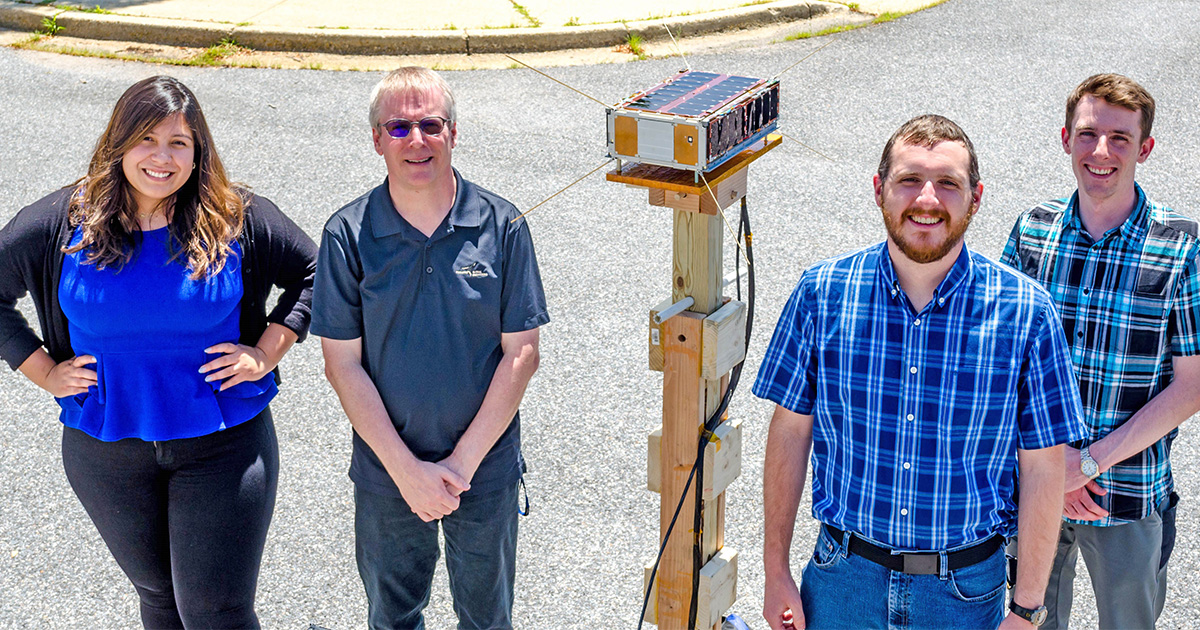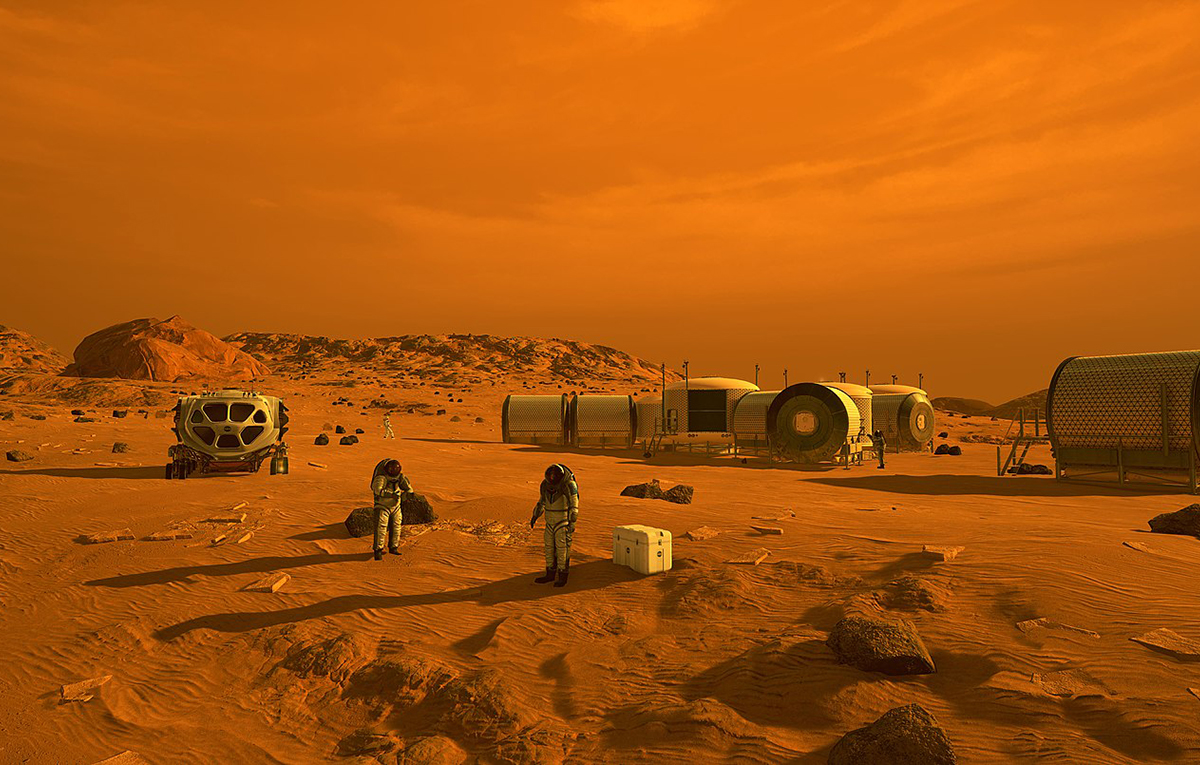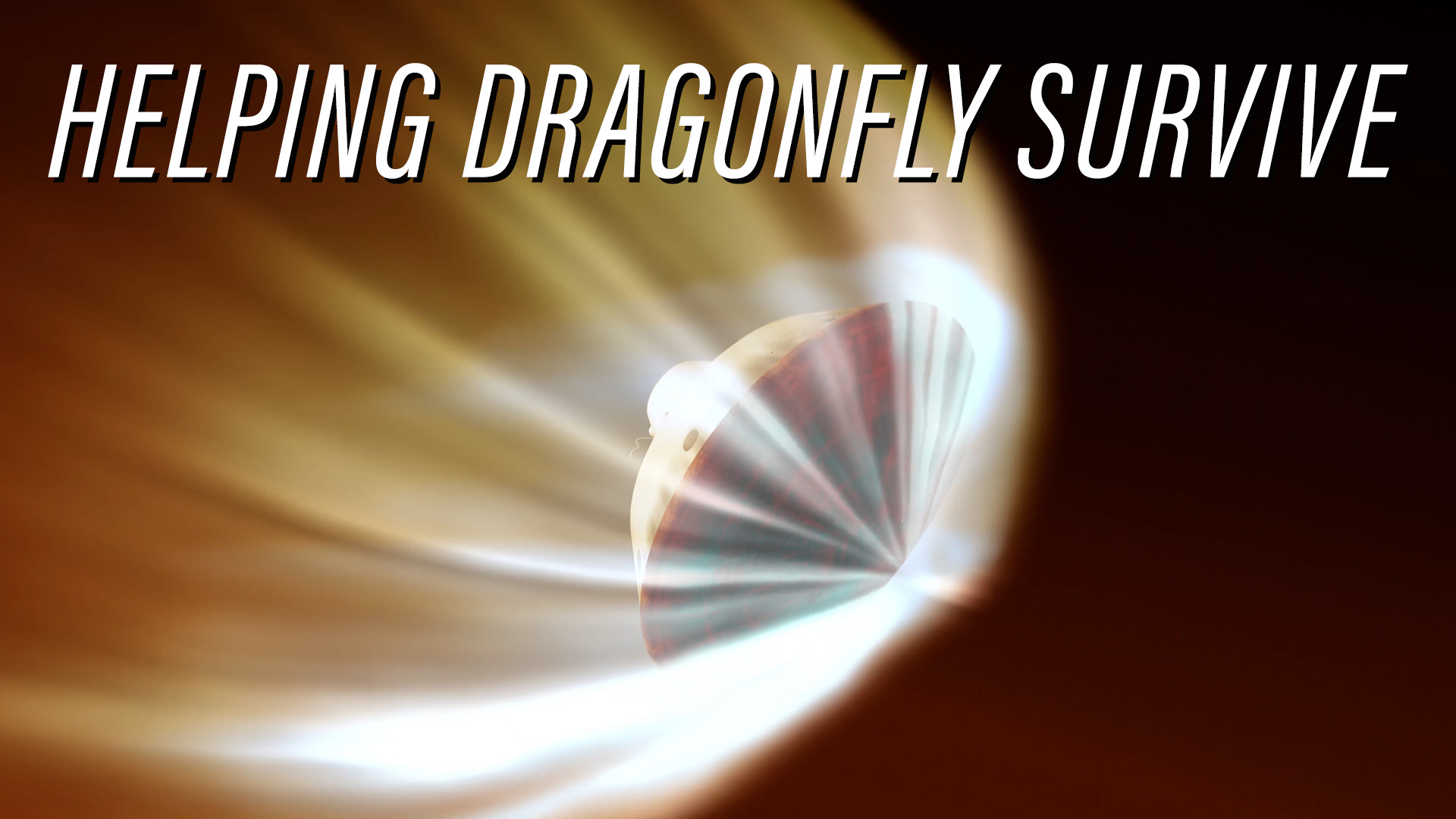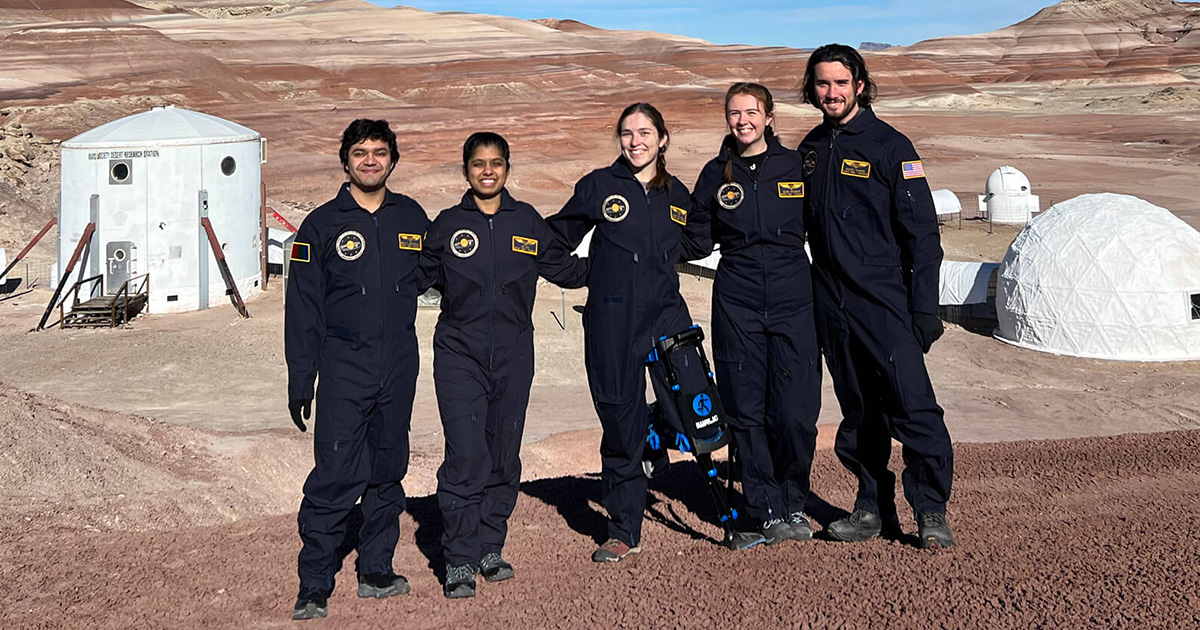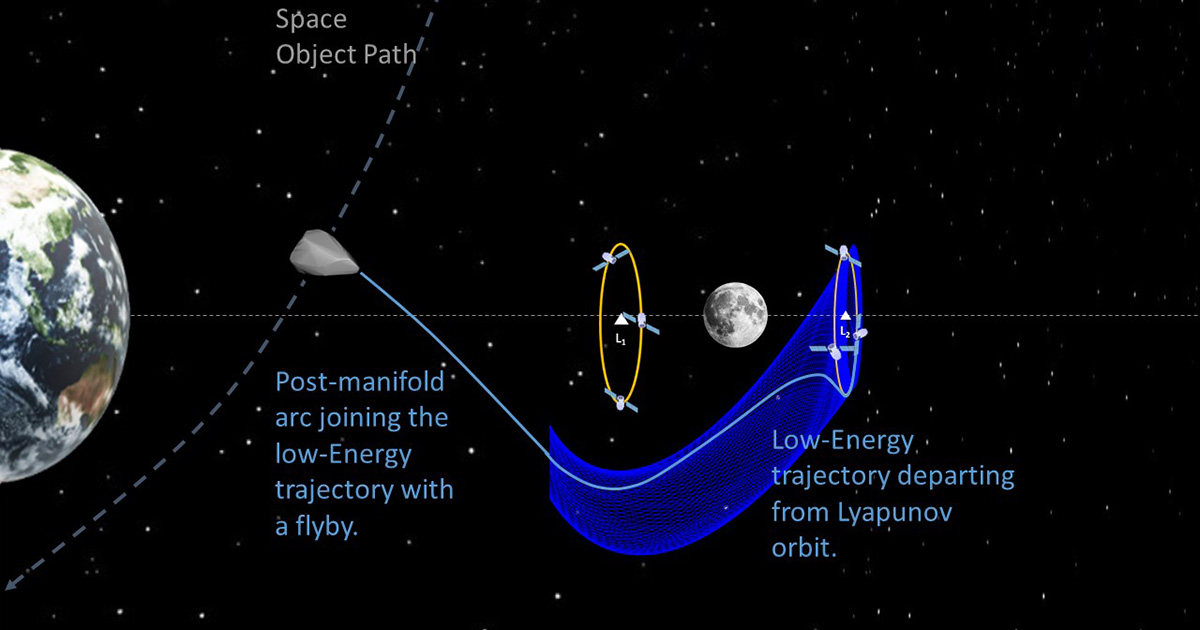Spacesuit Designer Puts Astronauts in Good Hands
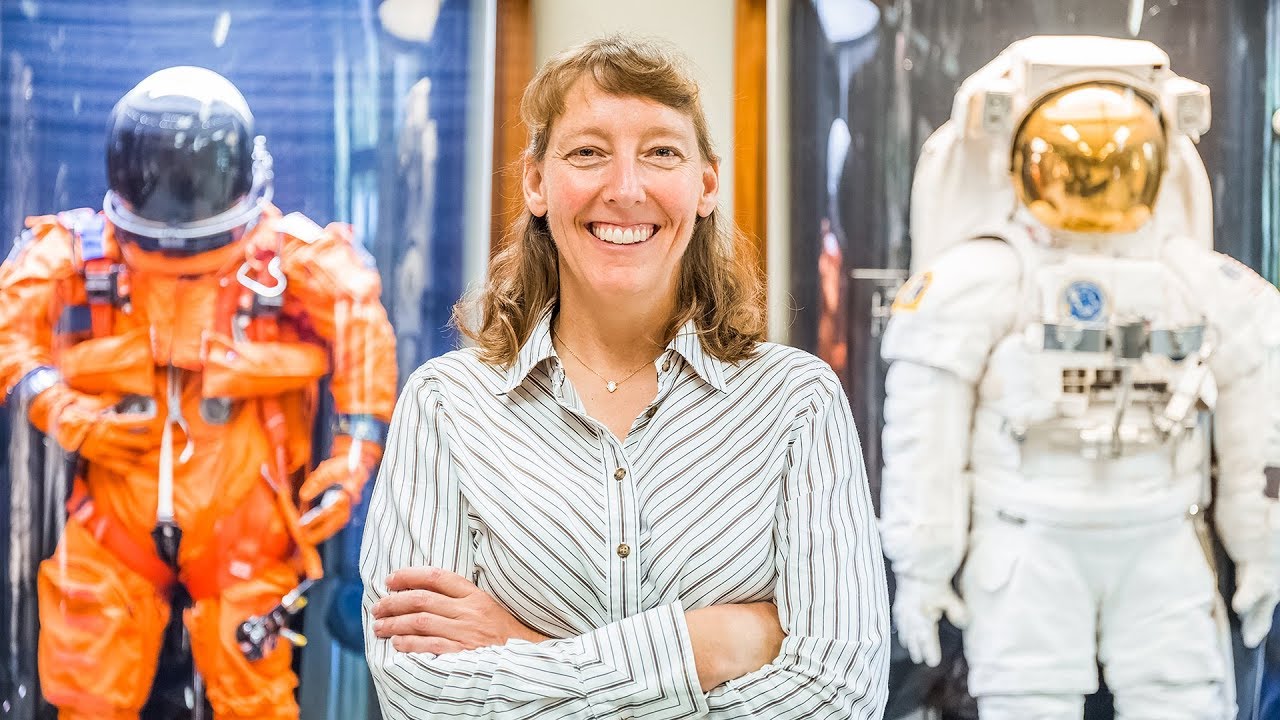
Many people go into the family business. For Amy Ross (BSME ’94, MSME ’96), that family business just happens to include human spaceflight! As head of Advanced Spacesuit Pressure Garment Development at NASA, Amy designed the gloves used by every spacewalking astronaut since 1998 — including her father, record-breaking astronaut Jerry Ross.
Hall of fame
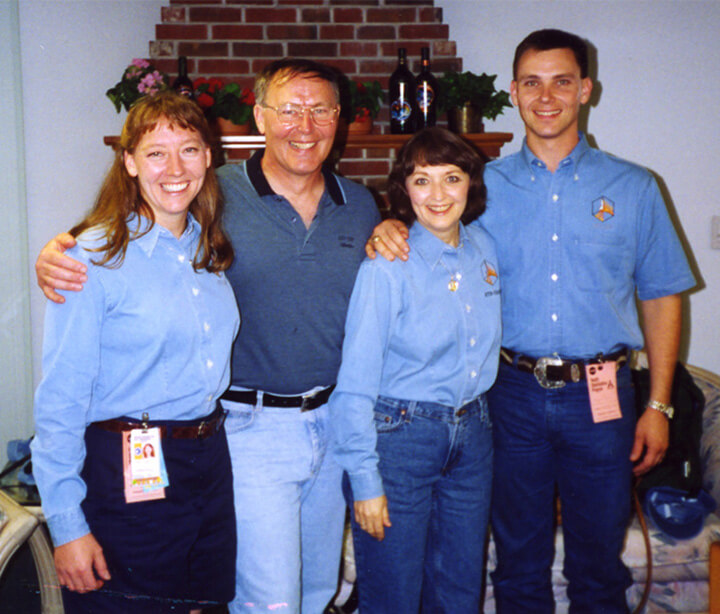
The Ross Family: Amy, Jerry, Karen, and Scott. Photo courtesy Amy Ross
Among the immense complex of non-descript grey buildings at Houston’s Johnson Space Center is Building 7, which houses NASA’s Crew and Thermal Systems division. The building also doubles as a museum of spacesuits. Behind glass you can see Gus Grissom’s flight suit from the Mercury days; Apollo spacesuits from the moonwalking era; and suits designed for Space Shuttle EVAs (extravehicular activities), which have also carried forward into International Space Station duty. You’ll also find a long wall of photos, showcasing every astronaut who has ever performed an EVA.
One person’s picture appears on the wall more than any other: Jerry Ross.
“My dad was very enthusiastic about his work,” says Amy. “He’s always told me that I need to do something I care about, something that challenges me, and something I enjoy.” For Jerry Ross, that passion led to degrees in mechanical engineering from Purdue (BSME ’70, MSME ’72), a career in the Air Force, and eventually an astronaut commission with NASA where he set records by flying on seven Shuttle missions, and performing nine spacewalks.
For Amy, having an astronaut for a father wasn’t unusual. “I’ve grown up in Houston since the 2nd grade,” she says, “and lots of people here work for NASA. So when I said, ‘My father’s an astronaut,’ one of my friends would come back with, ‘Well my father’s a flight director.’ It wasn’t until I got to Purdue that this really became a distinction for me.”
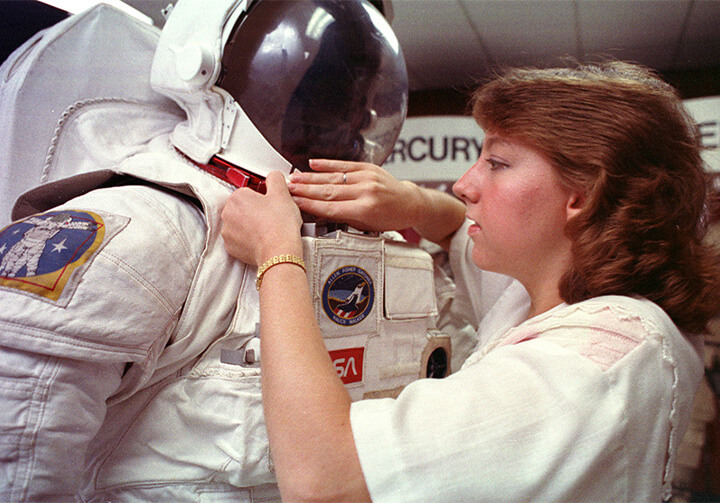
Following in his footsteps
Determining what would be her life’s challenge, Amy chose to follow her father’s footsteps into the space program. “The space program was meaningful to me,” she says, “because it seemed like a really good contribution to the country. That means something to me: not only to contribute something to the country, but to the world.”
The most obvious path to fulfilling that challenge? An engineering degree from her father’s alma mater, Purdue University. “I asked my Dad, ‘How do you work at NASA?’” says Amy. “He told me that engineering is the degree most people get, and that Purdue has a strong connection to NASA through their co-op program. So it became my mission in life to get into Purdue, become an engineer, and get into the co-op program.”
Cooperative education (or co-op) allows students to alternate semesters between studying at Purdue and working in industry. By the time they graduate, students have both an academic foundation, and years of real-world work experience. NASA co-ops are unique, because students can “try out” different divisions over multiple semesters. Amy remembers, “I worked in Flight Operations, where I got to work with the robotic arm on the Shuttle. I worked at White Sands Test Facility, where I got to blow stuff up. Eventually, because Dad was so enthusiastic about EVAs, I came to the Engineering Directorate and worked on spacesuits.”
Amy began digging into thermodynamics classes at Purdue, while also interning at Johnson Space Center with legendary spacesuit designer Joe Kosmo, who had worked at NASA since 1961. She continued at Purdue for a master’s degree, with her final project being a mathematical model of a spacesuit’s shoulder joint. After graduation, she began working at NASA full-time.
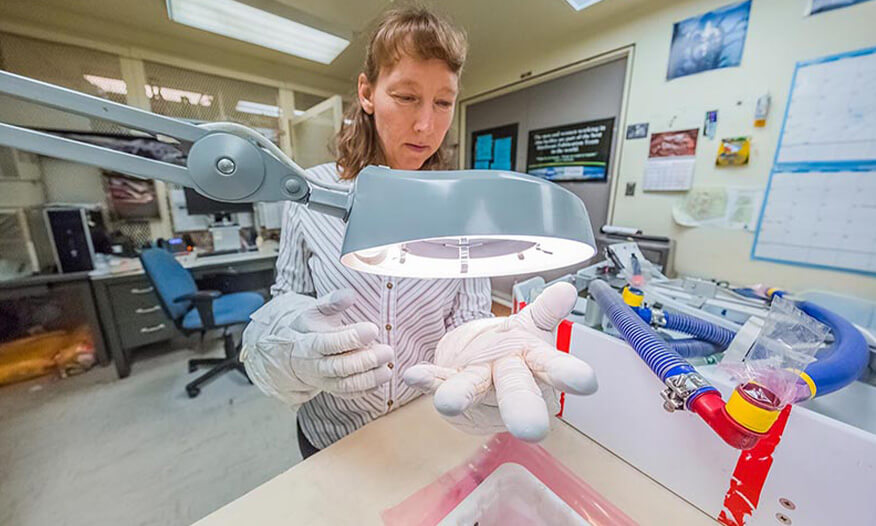
Good hands
Her first big responsibility: spacesuit gloves. Historically, astronauts performing spacewalks had limited mobility and dexterity with their hands; insulation and protection were the priorities, with comfort low on the list. “Trying to maintain the performance, while increasing the pressure they can withstand, is a hard job,” says Amy. “There are a lot of requirements when it comes to mobility, temperature, materials you can use, and durability. And of course, comfort is a part of it. There has to be a balance.”
Her NASA mentor, Joe Kosmo, had spent the last decade developing the parts needed for the next-generation glove — including using computer-aided design for the first time in a spacesuit. Amy’s job was to physically build the first pair, which could then be certified for testing during a real-world mission. Amy needed to know which astronaut would be the first to test them in space, so she could build the gloves to the correct size.
That’s when a familiar name came up in the crew rotation: Jerry Ross.
“OK, no pressure there!” laughed Amy. She and Joe worked to build the first pair of gloves for Amy’s father, spending long hours trying to pass certifications. It made for some interesting dinner table conversations. “My dad used to joke with me, ‘Where are my gloves? When are my gloves going to be ready? Are my gloves going to fly?’ It was a little nerve-racking!” (Incidentally, Amy’s mother, Karen, also worked in the space program, as a food technologist. Jerry used to joke that his wife feeds him and his daughter dresses him.)
Eventually the test gloves passed certification, and were transferred to Kennedy Space Center in Florida for STS-88, a 1998 Shuttle mission where Jerry Ross performed three spacewalks. Amy retells the story: “For the first EVA, he was supposed to wear the new gloves, and then go back to the old gloves on the second EVA for comparison. But he liked them so much, he never wore the old ones again; he wore the new gloves for all three of his EVAs. He even took a moment to comment during the spacewalk about how he appreciated all the work that went into the gloves, because they’re really good. I was watching it on TV, and jumped out of my chair screaming and cheering”
These new gloves (officially called Phase VI gloves) were so good, that every spacesuit since 1998 has featured them — including the suits now in service on the International Space Station. “Everyone on our team knew what was at stake,” says Amy, “and it’s so cool that we were able to take this from an idea, to successfully implementing them. And the fact that they’re still being used, even 20 years later, is really impressive and exciting.”
The future
Amy’s biggest challenge moving forward may be the uncertainty of human space exploration: beyond the International Space Station, nobody knows what the next step will be. “We’re always looking ahead to see what NASA’s future missions *might* be,” says Amy. “Right now, all of our spacesuits are geared toward the microgravity environment of the Space Station. But those suits are very stiff; you walk with your hands on the Space Station. When we go to the Moon or Mars, our needs will be very different.”
Amy’s team recently introduced the Z2: a new generation of spacesuit that accommodates the microgravity of space, as well as the environments of other planets. “Let’s say you’re doing geology on a planetary surface,” says Amy. “You’ll need to walk. You’ll need to run. You’ll need to bend over to pick up rock samples. You may even need to crawl at some point. The Z2 gives you the tools to be able to do that.”
The Z2 has been thoroughly tested, including in massive vacuum chambers, in a 10-kilometer walk in the desert, and in underwater sessions at NASA’s Neutral Buoyancy Lab (the giant swimming pool where astronauts train in near-weightless conditions). Amy looks forward to seeing the Z2 suits (or their successors) making their way onto the International Space Station, and even onto deep space missions like the upcoming Orion program. “We always want to make sure our spacesuit capability is ready,” says Amy. “Our materials, our mobility systems, and our technology should always be ready for whatever NASA wants to do next.”
“What I like about the job is that it’s hands-on,” says Amy, pun fully intended. “I come to the lab every day and touch real spacesuits. Some people who work on a rocket engine may see it once, or never see it at all because their work is on a computer. But to be a good spacesuit engineer, you need to physically get into the spacesuit. The human body is a complex system, and that’s what makes it so challenging.”
Amy also enjoys carrying on the legacy of her father, and the hundreds of other Purdue graduates in the space program. “We have Boilermakers all over the place here,” she says. “They are hard-working, successful people. If there’s someone in charge of a project, or someone who’s really on top of their stuff, it’s probably a Purdue person.”
